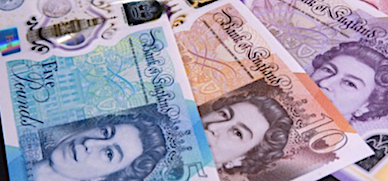By Mark McSherry
The UK government faces an unsustainable debt burden more than three times its current level unless future governments raise taxes to fund increasing costs from an ageing population and falling revenue from taxation on motor fuel, the Office for Budget Responsibility (OBR) warned on Thursday.
The OBR, a government agency, said UK government debt was on course to reach more than 320% of gross domestic product (GDP) in 50 years’ time — up from the current level of 96% or £2.4 trillion — if successive governments failed to tighten fiscal policy.
The OBR said: “… in the long run the pressures of an aging population on spending and the loss of existing motoring taxes in a decarbonising economy leaves public debt on an unsustainable path in the long term …
“Factoring in a stylised estimate of the asymmetric costs associated with inevitable periodic shocks would push debt up to 100 per cent of GDP by 2047-48 and nearly 320 per cent of GDP in 50 years,” said the OBR.
“These figures are based on a simple reading of post-war UK fiscal history.”
In its annual health check of the UK government’s finances, the OBR said public debt is now more than triple its level at the start of this century.
The OBR added: “In little more than two years, the UK economy and public finances have felt the consequences of a global health crisis caused by Covid-19, a global security crisis sparked by Russia’s invasion of Ukraine, and a global energy crisis brought about by both.
“In a little over a decade, we have also felt the economic and fiscal consequences of a global financial crisis and the uncertainty created by the UK’s decision to leave the EU and the ensuing negotiations on how to go about it.
“And in the decades ahead, governments in the UK and around the world face perhaps the still greater economic and fiscal challenges of addressing climate change, dealing with the fiscal costs of ageing, and managing all these pressures and risks against a backdrop of potentially weaker productivity growth, higher levels of public debt, and rising interest rates.
“It is hard to escape the conclusion that the world is becoming a riskier place. And for fiscal policy makers, the costs associated with those risks seem to be rising too.
“Discretionary fiscal support for households, firms, and public services during the pandemic was unprecedented in scale, reaching 10.4 per cent of GDP at its peak in the UK, and may have raised expectations regarding the role of government in future crises.
“The UK Government has so far spent as much this year (1¼ per cent of GDP) to help households to cope with the sharp rise in the cost of living as it did supporting the economy through the financial crisis.
“It is largely as a consequence of successive shocks, and the Government’s response to them, that, at over 90 per cent of GDP, public debt is now more than triple its level at the start of the century and more than double the around 40 per cent of GDP projected by the Treasury in the UK’s first pioneering Long-term public finance report published two decades ago.”
